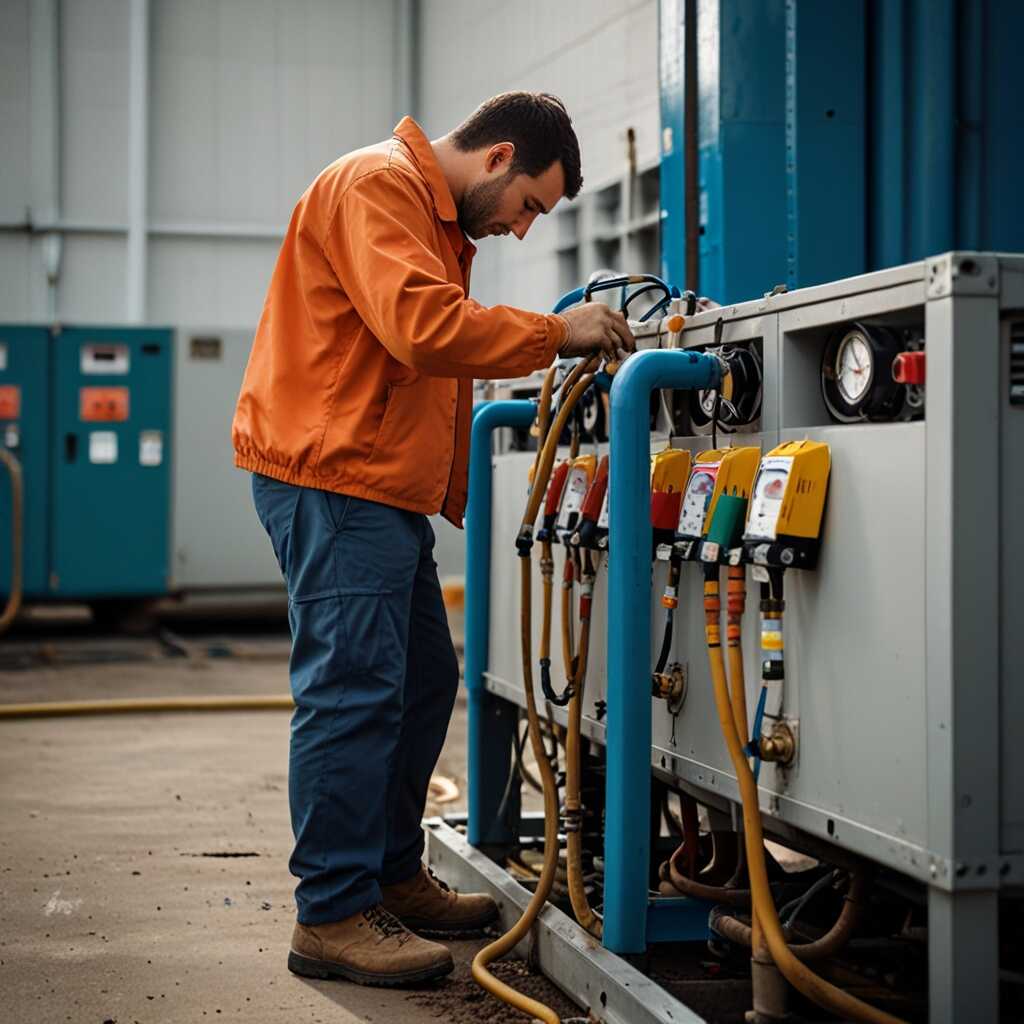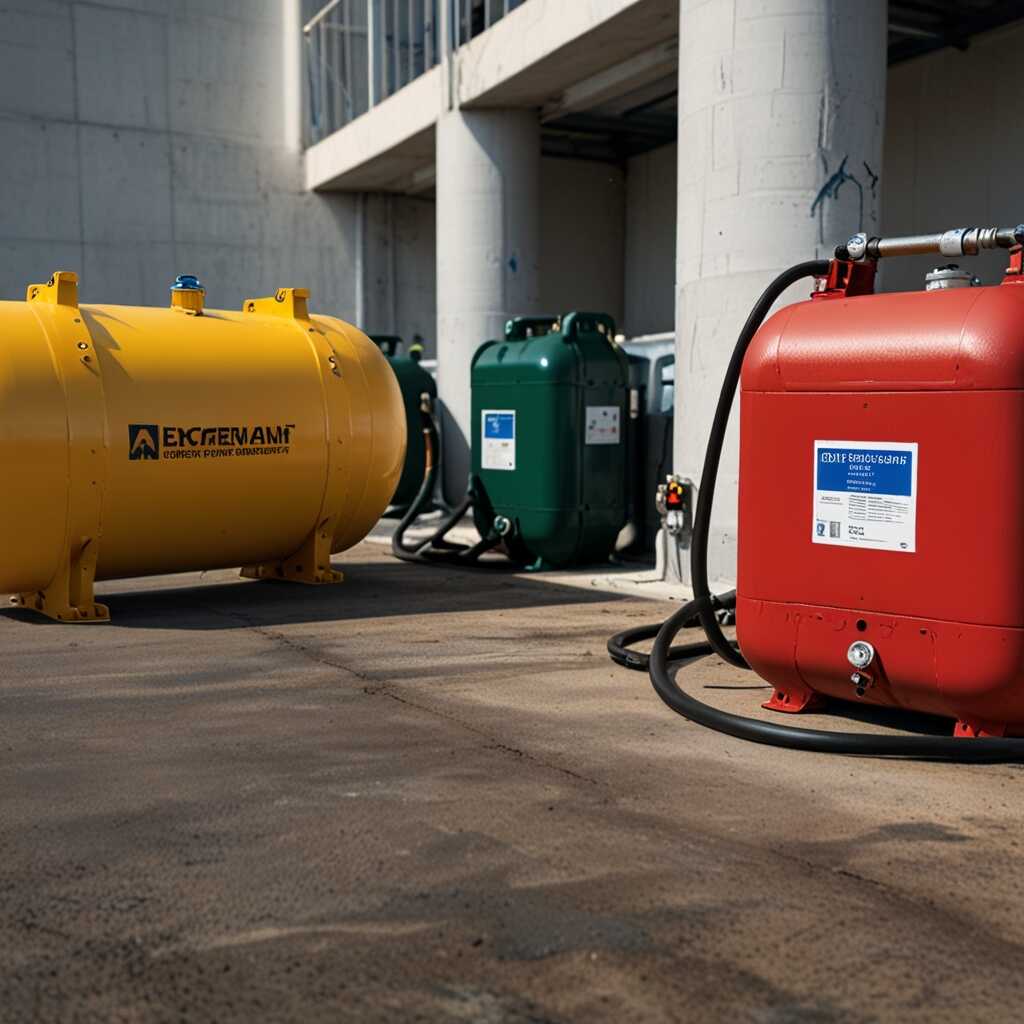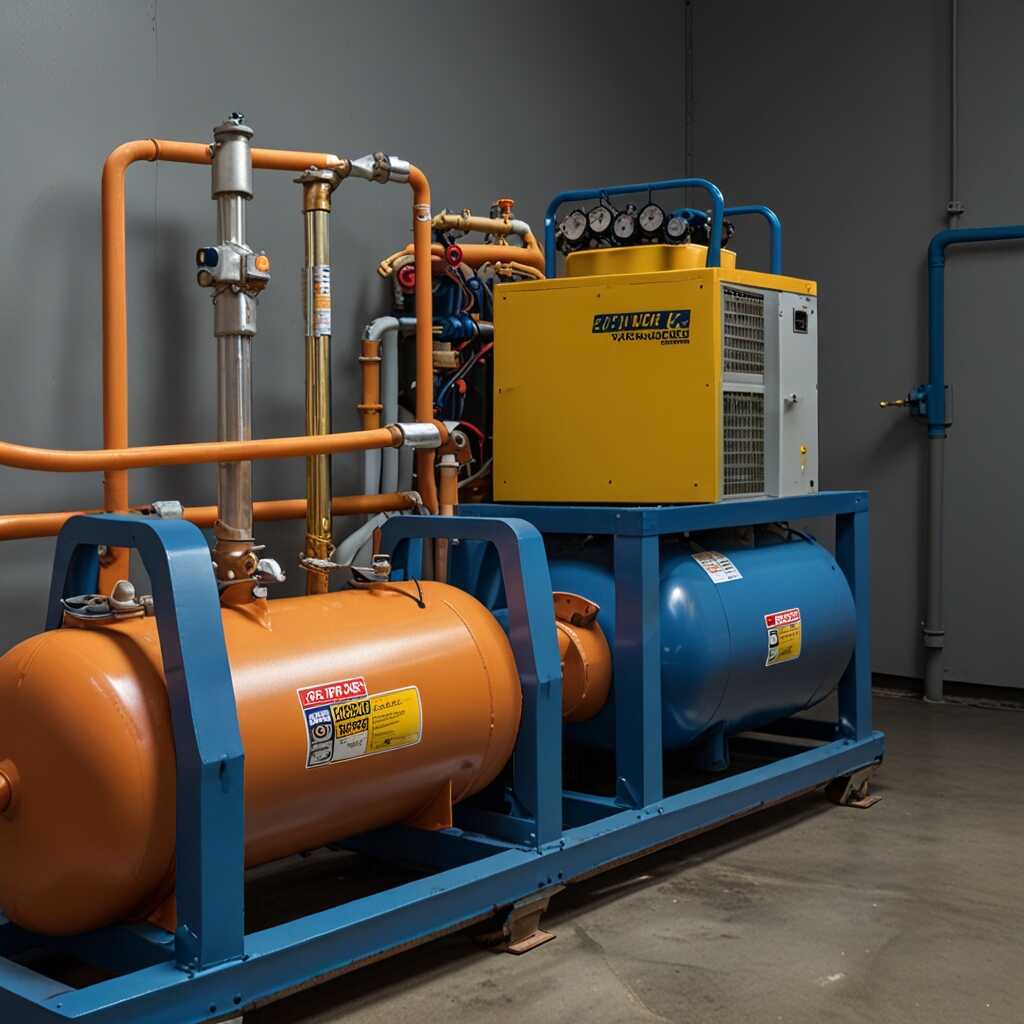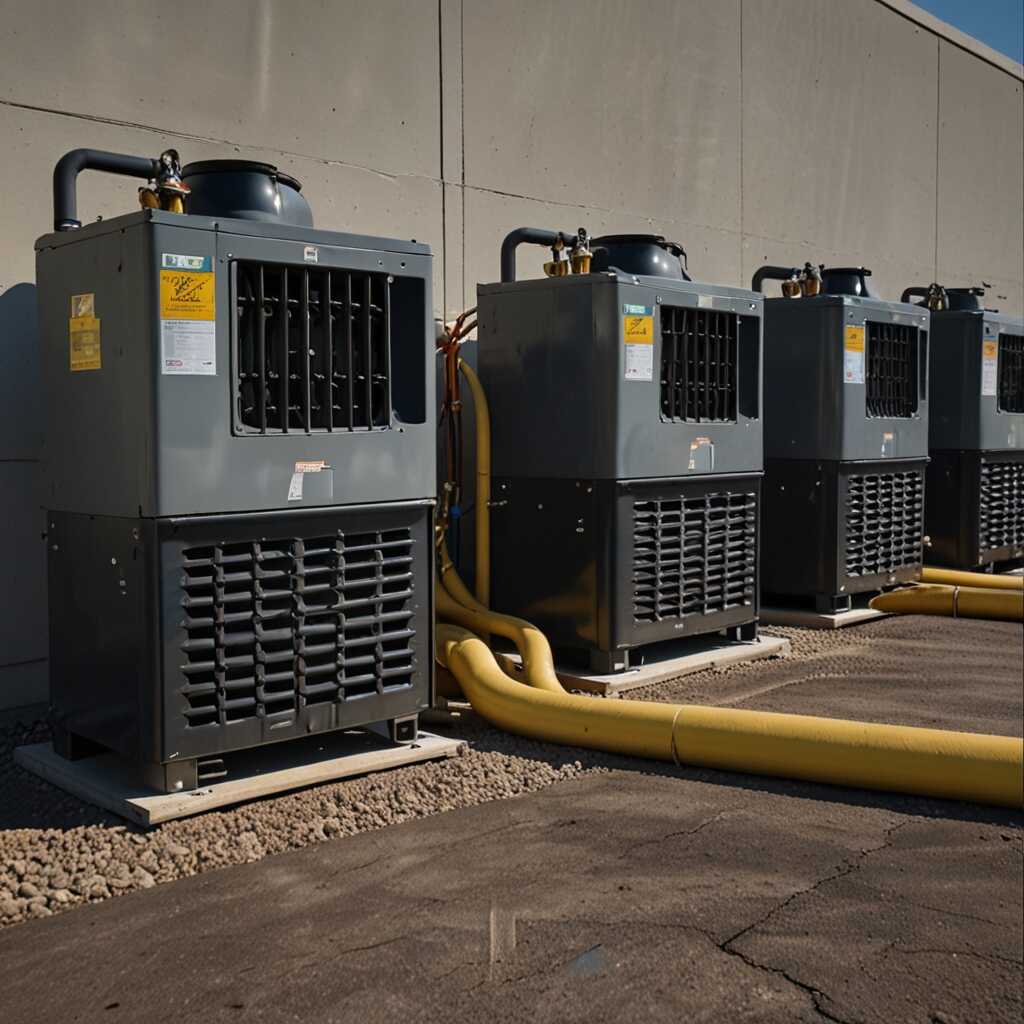Refrigerant recovery machines play a crucial role in preventing ozone depletion by safely extracting refrigerants from HVAC systems. These machines help ensure that harmful substances do not escape into our atmosphere, which depletes the ozone layer. At Refrigerant Recovery Pro, we focus on providing HVAC professionals with the guidance they need for effective refrigerant management. Understanding the importance of using recovery machines is vital for protecting the environment and complying with regulatory standards.
What is Ozone Depletion and Why It Matters
Ozone depletion refers to the thinning of the ozone layer in the Earth’s stratosphere. The ozone layer absorbs harmful ultraviolet (UV) radiation from the sun. This thinning primarily occurs due to human-made chemicals known as chlorofluorocarbons (CFCs) and halons. When these substances are released into the atmosphere, they interact with ozone molecules, breaking them apart and significantly reducing ozone levels. The implications are severe. Increased UV radiation leads to health risks like skin cancer and eye cataracts. It also negatively affects ecosystems by harming wildlife, especially aquatic life that relies on healthy UV shields. Research shows that since the 1970s, the ozone layer has decreased by about 3%, intensifying environmental concerns. Understanding ozone depletion highlights the urgency of using refrigerant recovery machines effectively to limit harmful emissions.
Understanding the Science Behind Ozone Layer Thinning
The science of ozone layer thinning involves complex reactions. Ozone consists of three oxygen atoms and is formed at high altitudes. CFCs break down when exposed to UV radiation, releasing chlorine atoms. A single chlorine atom can destroy more than 100,000 ozone molecules. The depletion occurs primarily in polar regions. Research has shown that this thinning disrupts the balance of natural UV radiation. Wildlife suffers, particularly for species like frogs and certain fish. Increased UV levels can reduce phytoplankton populations, impacting the entire marine food web. Mitigating these effects requires enhanced solutions like reliable refrigerant recovery machines.
Functionality of Refrigerant Recovery Machines in HVAC Systems
Refrigerant recovery machines are integral to HVAC systems. They work by extracting refrigerant from units during maintenance or decommissioning. Key components include compressors, condensers, and receiver tanks. These machines ensure efficient removal and storage of refrigerants, preventing environmental release. They also provide significant advantages over traditional refrigerant disposal methods. They help HVAC professionals adhere to regulations aimed at minimizing ozone depletion.
Operational Mechanisms and Their Importance
The operational mechanisms of refrigerant recovery machines are designed for reliability and efficiency. Modern machines utilize high-efficiency compressors that enhance recovery speeds. They often feature filters that ensure only clean refrigerant is stored. This design helps in maintaining system performance while complying with environmental regulations. Additionally, machines may include built-in testing capabilities to verify recovery rates. These features enable HVAC professionals to perform refrigerant management practices effectively while meeting 2025 legal requirements.

Environmental Benefits of Proper Refrigerant Management Techniques
Effective refrigerant management practices provide significant environmental benefits. They reduce refrigerant leaks, which directly lower greenhouse gas emissions. Ozone depletion can also be mitigated when HVAC professionals implement reliable recovery techniques. Research shows that over 90% of refrigerants can be recovered with proper methods, enhancing recovery efficiency. This reduction leads to better climate stability and supports overall environmental protection strategies.
Impact of Refrigerant Leaks on Climate Change
Refrigerant leaks substantially enhance climate change effects. These substances often have high global warming potential. For instance, hydrofluorocarbons (HFCs), commonly found in HVAC systems, can be thousands of times more effective than carbon dioxide at trapping heat in the atmosphere. This alarming statistic emphasizes the importance of effective refrigerant management. By focusing on ozone depletion reduction and improving recovery systems, HVAC professionals can play a vital role in combating climate change. Refrigerant Recovery Pro offers expert guidance to ensure compliance and enhance management strategies for optimal performance.
Numerical Insights on Environmental Impact
- Over 10 million tons of refrigerants are used globally each year.
- Refrigerant recovery machines can reduce emissions by up to 90%.
- The ozone layer has been recovering at a rate of 1-3% per decade due to regulations.
- In the US, over 700,000 HVAC technicians can use recovery machines.
- Each year, the HVAC industry contributes about 20% of refrigerant emissions.
- An estimated 50% of refrigerant escapes during service and repair without proper recovery.
- Recovery processes can save the industry billions in lost refrigerant costs annually.

Understanding EPA Regulations on Refrigerant Recovery Operations
EPA regulations establish essential guidelines for refrigerant recovery. HVAC professionals must comply with rules concerning safe refrigerant handling, ensuring that systems are properly evacuated to minimize leaks. These regulations promote the responsible use of refrigerants, protecting the ozone layer. Compliance strategies include regular training, using certified recovery machines, and maintaining detailed records of refrigerant usage. Adhering to these EPA refrigerant recovery regulations not only protects the environment but also enhances company reliability and client trust.
Strategies for Effective Compliance with EPA Guidelines
Professionals can improve their refrigerant management practices by implementing strict protocols that adhere to current environmental protection requirements. This may include equipment testing, record-keeping, and leak detection measures to identify and fix issues promptly. HVAC companies should regularly review their systems and invest in durable recovery machines designed for high efficiency and environmental compliance. Tracking refrigerant use and ensuring proper disposal also helps minimize the risk of penalties while demonstrating a commitment to sustainability.

Advantages of Utilizing Refrigerant Recovery Machines in Operations
Using refrigerant recovery machines offers several critical benefits for HVAC operations. These machines enhance energy efficiency by allowing technicians to recover refrigerants rather than venting them. The environmental impact reduction is significant, as these devices prevent harmful gases from entering the atmosphere. They also produce operational cost savings by reducing the amount of refrigerant that needs to be purchased. Furthermore, the return on investment for high-quality machines can be substantial, depending on the volume of refrigerant managed and the operating costs saved over time.
Understanding the Cost-Benefit Analysis for Refrigerant Recovery Machines
The cost-benefit analysis for refrigerant recovery machines focuses on their long-term financial benefits. HVAC professionals can expect up to a 30% reduction in refrigerant costs due to efficient recovery. Quality machines improve energy efficiency, enabling faster job completion and reducing operational downtime. Investing in high-quality refrigerant recovery machines ensures durability and reliability, ultimately leading to substantial savings in labor and materials. For example, a machine priced at $3,000 may offer a ROI exceeding $10,000 over five years, making this equipment a financially sound decision.
Key Advantages of Environmental Management Tools
- Machines help maintain refrigerant purity, prolonging equipment life.
- Refrigerant recovery machines reduce harmful emissions into the atmosphere.
- They enhance compliance with environmental regulations and standards.
- Specialized equipment makes the recovery process much faster and safer.
- Using these machines can improve workplace safety for HVAC technicians.
- Systems often include features for managing multiple refrigerants efficiently.
- They contribute to sustainable practices, leading to lower environmental impact.

Best Practices for Efficient Operation of Recovery Equipment
Optimizing the performance of refrigerant recovery machines involves several key strategies. Regular maintenance is essential for ensuring reliability. Users should clean filters and check for leaks often. This improves operational efficiency and prolongs equipment life. Understanding the differences among various brands also matters. Reliable brands offer machines designed to handle a wider range of refrigerants. Testing equipment at least once every six months helps maintain performance. Data from consistent testing can guide improvements. Effective refrigerant management techniques help minimize ecological impact, ensuring compliance with industry regulations.
Understanding Refrigerant Recovery Machine Features
Knowing the specific features of refrigerant recovery machines can significantly enhance your operation. Look for machines that offer dual-use functionality. These machines can handle multiple refrigerants and deliver improved recovery rates. Machines designed with higher performance capabilities usually provide faster recovery time. Key performance indicators include the rate of recovery and pressure testing. Reliable models often have built-in monitoring systems that can alert users to potential issues. Researching user reviews helps professionals identify models that have proven reliability and durability over time.
Emerging Trends and Innovations in Refrigerant Recovery Technologies
Recent advancements in refrigerant recovery technology focus on improving efficiency ratings and durability. Innovative technologies include advanced sensors that monitor the amount of refrigerant recovered, enhancing performance reliability. These tools help HVAC professionals reduce ozone-depleting substances by ensuring efficient refrigerant capture. Emerging trends also include compact, high-capacity machines designed for rapid recovery, making them suitable for diverse applications. Additionally, technologies that streamline the refrigerant analysis process can help professionals make informed decisions based on accurate data.
Innovative Features Enhancing Refrigerant Recovery Performance
New refrigerant recovery machines feature automated processes that increase operational ease. These machines can handle different refrigerant types, enhancing compatibility and reducing cross-contamination risks. Investigating products that include features like self-diagnostics or real-time monitoring can significantly improve recovery rates. For instance, some machines can collect data to evaluate performance and support regulatory compliance. Selecting machines with demonstrated reliability provides HVAC professionals the tools needed for effective and sustainable refrigerant management.
Brands and Their Influence on Recovery Solutions
- Brand A specializes in portable recovery units, ideal for small businesses.
- Brand B offers high-capacity machines for large commercial applications.
- Brand C provides budget-friendly options for entry-level technicians.
- Professional technicians often prefer Brand D for reliability and performance.
- Smaller shops benefit from Brand E’s compact design and ease of use.
- Brand F has advanced technology for real-time refrigerant tracking.
- Large operations may choose Brand G for extensive customer support and training.
Essential Resources for HVAC Professionals on Refrigerant Management
HVAC professionals should follow several best practices for refrigerant management. These include regular maintenance checks for leaks, proper training on refrigerant recovery, and adherence to EPA regulations. Professionals should also utilize reliable tools designed for refrigerant recovery. Industry tools, such as recovery machines and analyzers, often come with efficiency features to enhance performance. According to industry standards, recovery machines typically handle up to 50 pounds of refrigerant. For in-depth guidance, professionals can consult industry guidelines that specify safe recovery practices and preventive measures.
Recommended Tools for Effective Refrigerant Recovery
Different tools enhance the refrigerant recovery process for HVAC professionals. Recovery machines are designed to efficiently handle refrigerant, ensuring maximum recovery efficiency. An ideal recovery machine features a durable construction to withstand rigorous use and includes reliable testing capabilities. Look for machines that can easily handle various refrigerants and ensure that they are EPA-certified. Tools like manifold gauges, refrigerant scales, and leak detectors are essential for effective refrigerant management. Utilizing these tools not only ensures compliance but enhances overall system reliability.